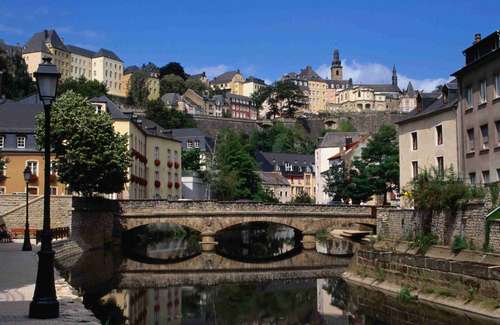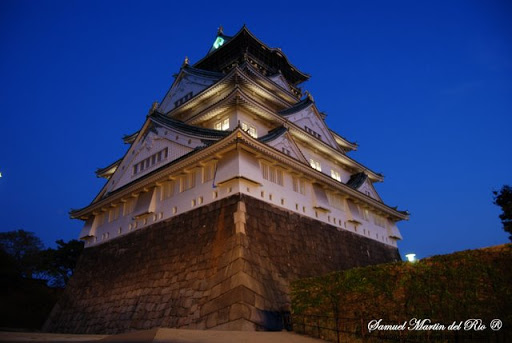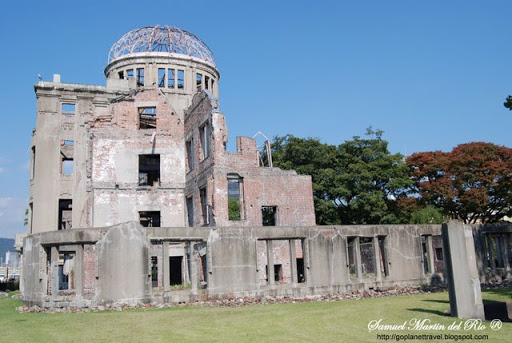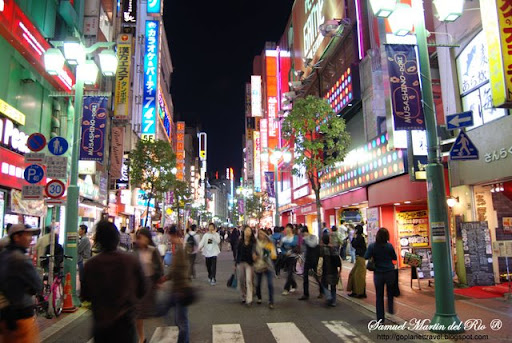My YOUTUBE video of SAN FRANCISCO
San Francisco's Chinatown is the oldest Chinatown in North America. It is also the largest Chinese Community outside of Asia, according to The New Encyclopaedia Britannica Micropaedia vol. 10, 2007 Ed. Established in the 1850s, it has featured significantly in popular culture venues such as film, music, photography and literature. It is one of the largest and most prominent centers of Chinese activity outside of China.
featured significantly in popular culture venues such as film, music, photography and literature. It is one of the largest and most prominent centers of Chinese activity outside of China.
After nearly two decades of decline due to the emergence of other large Chinese communities in the Richmond and Sunset Districts of San Francisco, and possibly from the revitalization of Oakland's Chinatown only 10 mi (16 km) away — and from the development of Asian shopping centers throughout the San Francisco Bay Area, it has been experiencing an economic upturn in recent years. "Chinatown is now a major economic boon to the city as one of its top tourist attractions....". Lonely Planet San Francisco City Guide. Even during bad times, it has always remained a major tourist attraction — drawing more visitors than the Golden Gate Bridge. "San Francisco Chinatown Page at SFGate.com"
San Francisco's Chinatown was the port of entry for early Taishanese and Zhongshanese Chinese immigrants from the southern Guangdong province of China from the 1850s to the 1900s. The area was the one geographical region deeded by the city government and private property owners which allowed Chinese persons to inherit and inhabit dwellings within the city. The majority of these Chinese shopkeepers, restaurant owners, and hired workers in San Francisco Chinatown were predominantly Taishanese and male. Many Chinese found jobs working for large companies seeking a source of cheap labor, most famously as part of Central Pacific on the Transcontinental Railroad. Other early immigrants worked as mine workers or independent prospectors hoping to strike it rich during the 1849 Gold Rush.
immigrants from the southern Guangdong province of China from the 1850s to the 1900s. The area was the one geographical region deeded by the city government and private property owners which allowed Chinese persons to inherit and inhabit dwellings within the city. The majority of these Chinese shopkeepers, restaurant owners, and hired workers in San Francisco Chinatown were predominantly Taishanese and male. Many Chinese found jobs working for large companies seeking a source of cheap labor, most famously as part of Central Pacific on the Transcontinental Railroad. Other early immigrants worked as mine workers or independent prospectors hoping to strike it rich during the 1849 Gold Rush.
With massive national unemployment in the wake of the Panic of 1873, racial tensions in the city boiled over into full blown race riots. In response to the racial violence, the Consolidated Chinese Benevolent Association or the Chinese Six Companies, which evolved out of the labor recruiting organizations for different areas of Guangdong, was created as a means of providing the community with a unified voice. The heads of these companies were the leaders of the Chinese merchants, who represented the Chinese community in front of the business community as a whole and the city government.
Guangdong, was created as a means of providing the community with a unified voice. The heads of these companies were the leaders of the Chinese merchants, who represented the Chinese community in front of the business community as a whole and the city government.
The neighborhood was completely destroyed in the 1906 earthquake that leveled most of the city. During the city's rebuilding process, racist city planners and real-estate developers had hatched plans to move Chinatown to the Hunters Point neighborhood at the southern edge of the city, even further south in Daly City, or even back to China; and the neighborhood would then be absorbed into the financial district. Their plans failed as the Chinese, particularly with the efforts of Consolidated Chinese Six
Not unlike much of San Francisco, a period of criminality ensued in some tongs on the produce of smuggling, gambling and prostitution, and by the early 1880s, the white population had adopted the term Tong war to describe periods violence in Chinatown, the San Francisco Police Department had established its so-called Chinatown Squad. One of the more successful sergeants, Jack Manion, was appointed in 1921 and served for two decades. The squad was finally disbanded in August 1955 by Police Chief George Healey, upon the request of the influential Chinese World newspaper, which had editorialized that the squad was an "affront to Americans of Chinese descent".
and served for two decades. The squad was finally disbanded in August 1955 by Police Chief George Healey, upon the request of the influential Chinese World newspaper, which had editorialized that the squad was an "affront to Americans of Chinese descent".
companies, the Chinese government, and American commercial interests reclaimed the neighborhood and convinced the city government to relent. Part of their efforts in doing so was to plan and rebuild the neighborhood as a western friendly tourist attraction. The rebuilt area that is seen today, resembles such plans.
Many early Chinese immigrants to San Francisco and beyond were processed at Angel Island, now a state park, in the San Francisco Bay. Unlike Ellis Island in the East where prospective European immigrants might be held for up to a week, Angel Island typically detained Chinese immig rants for months while they were interrogated closely to determine if they were really who their papers said they were. The entire detention facility has been renovated in 2005 and 2006 under a special federal grant.
rants for months while they were interrogated closely to determine if they were really who their papers said they were. The entire detention facility has been renovated in 2005 and 2006 under a special federal grant.
The xenophobia, or fear of foreigners, became law as the United States Government passed the Chinese Exclusion Act of 1882 – the first immigration restriction law aimed at a single ethnic group. This law, along with other immigration restriction laws such as the Geary Act, greatly reduced the numbers of Chinese allowed into the country and the city, and in theory limited Chinese immigration to single males only. Exceptions were in fact granted to the families of wealthy merchants, but the law was still effective enough to reduce the population of the neighborhood to an all time low in the 1920s. The exclusion act was repealed during World War II under the Magnuson Act in recognition of the important role of China as an ally in the war, although tight quotas still applied.
September 2008
San Francisco's Chinatown is the oldest Chinatown in North America. It is also the largest Chinese Community outside of Asia, according to The New Encyclopaedia Britannica Micropaedia vol. 10, 2007 Ed. Established in the 1850s, it has
 featured significantly in popular culture venues such as film, music, photography and literature. It is one of the largest and most prominent centers of Chinese activity outside of China.
featured significantly in popular culture venues such as film, music, photography and literature. It is one of the largest and most prominent centers of Chinese activity outside of China.After nearly two decades of decline due to the emergence of other large Chinese communities in the Richmond and Sunset Districts of San Francisco, and possibly from the revitalization of Oakland's Chinatown only 10 mi (16 km) away — and from the development of Asian shopping centers throughout the San Francisco Bay Area, it has been experiencing an economic upturn in recent years. "Chinatown is now a major economic boon to the city as one of its top tourist attractions....". Lonely Planet San Francisco City Guide. Even during bad times, it has always remained a major tourist attraction — drawing more visitors than the Golden Gate Bridge. "San Francisco Chinatown Page at SFGate.com"
San Francisco's Chinatown was the port of entry for early Taishanese and Zhongshanese Chinese
 immigrants from the southern Guangdong province of China from the 1850s to the 1900s. The area was the one geographical region deeded by the city government and private property owners which allowed Chinese persons to inherit and inhabit dwellings within the city. The majority of these Chinese shopkeepers, restaurant owners, and hired workers in San Francisco Chinatown were predominantly Taishanese and male. Many Chinese found jobs working for large companies seeking a source of cheap labor, most famously as part of Central Pacific on the Transcontinental Railroad. Other early immigrants worked as mine workers or independent prospectors hoping to strike it rich during the 1849 Gold Rush.
immigrants from the southern Guangdong province of China from the 1850s to the 1900s. The area was the one geographical region deeded by the city government and private property owners which allowed Chinese persons to inherit and inhabit dwellings within the city. The majority of these Chinese shopkeepers, restaurant owners, and hired workers in San Francisco Chinatown were predominantly Taishanese and male. Many Chinese found jobs working for large companies seeking a source of cheap labor, most famously as part of Central Pacific on the Transcontinental Railroad. Other early immigrants worked as mine workers or independent prospectors hoping to strike it rich during the 1849 Gold Rush.With massive national unemployment in the wake of the Panic of 1873, racial tensions in the city boiled over into full blown race riots. In response to the racial violence, the Consolidated Chinese Benevolent Association or the Chinese Six Companies, which evolved out of the labor recruiting organizations for different areas of
 Guangdong, was created as a means of providing the community with a unified voice. The heads of these companies were the leaders of the Chinese merchants, who represented the Chinese community in front of the business community as a whole and the city government.
Guangdong, was created as a means of providing the community with a unified voice. The heads of these companies were the leaders of the Chinese merchants, who represented the Chinese community in front of the business community as a whole and the city government.The neighborhood was completely destroyed in the 1906 earthquake that leveled most of the city. During the city's rebuilding process, racist city planners and real-estate developers had hatched plans to move Chinatown to the Hunters Point neighborhood at the southern edge of the city, even further south in Daly City, or even back to China; and the neighborhood would then be absorbed into the financial district. Their plans failed as the Chinese, particularly with the efforts of Consolidated Chinese Six
Not unlike much of San Francisco, a period of criminality ensued in some tongs on the produce of smuggling, gambling and prostitution, and by the early 1880s, the white population had adopted the term Tong war to describe periods violence in Chinatown, the San Francisco Police Department had established its so-called Chinatown Squad. One of the more successful sergeants, Jack Manion, was appointed in 1921
 and served for two decades. The squad was finally disbanded in August 1955 by Police Chief George Healey, upon the request of the influential Chinese World newspaper, which had editorialized that the squad was an "affront to Americans of Chinese descent".
and served for two decades. The squad was finally disbanded in August 1955 by Police Chief George Healey, upon the request of the influential Chinese World newspaper, which had editorialized that the squad was an "affront to Americans of Chinese descent".companies, the Chinese government, and American commercial interests reclaimed the neighborhood and convinced the city government to relent. Part of their efforts in doing so was to plan and rebuild the neighborhood as a western friendly tourist attraction. The rebuilt area that is seen today, resembles such plans.
Many early Chinese immigrants to San Francisco and beyond were processed at Angel Island, now a state park, in the San Francisco Bay. Unlike Ellis Island in the East where prospective European immigrants might be held for up to a week, Angel Island typically detained Chinese immig
 rants for months while they were interrogated closely to determine if they were really who their papers said they were. The entire detention facility has been renovated in 2005 and 2006 under a special federal grant.
rants for months while they were interrogated closely to determine if they were really who their papers said they were. The entire detention facility has been renovated in 2005 and 2006 under a special federal grant.The xenophobia, or fear of foreigners, became law as the United States Government passed the Chinese Exclusion Act of 1882 – the first immigration restriction law aimed at a single ethnic group. This law, along with other immigration restriction laws such as the Geary Act, greatly reduced the numbers of Chinese allowed into the country and the city, and in theory limited Chinese immigration to single males only. Exceptions were in fact granted to the families of wealthy merchants, but the law was still effective enough to reduce the population of the neighborhood to an all time low in the 1920s. The exclusion act was repealed during World War II under the Magnuson Act in recognition of the important role of China as an ally in the war, although tight quotas still applied.
September 2008



































































































No comments:
Post a Comment